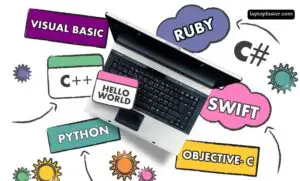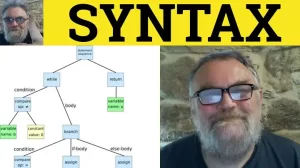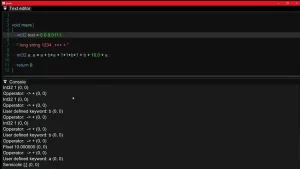How Coding Languages Are Made – You need to Know
The Concept Of Making Of Programming Languages

Developing a new programming Coding Languages is a complex process that requires careful thought and planning. As a software developer who designs programming languages, I’d like to provide some insight into the key steps and decisions involved in creating a new coding language from scratch.
Defining the Purpose and Goals
The first step is to clearly define the purpose and goals for the new language. This involves answering questions like:
– What issues or pain points is the new language trying to solve?
– Is it designed for a specific domain or purpose like web development, artificial intelligence, systems programming etc.?
– Should it be general-purpose or domain-specific?
– Will it be object-oriented, functional, procedural, or something else?
– What programming paradigms will it support?
– Will it be compiled, interpreted or both?
– What should its performance characteristics and resource usage be optimized for?
The answers to these questions will guide the design decisions made for the rest of the language development process. The primary goals and philosophical approach of the language need to be well-defined.

Credit: Youtube
Defining the Syntax
The syntax refers to the structure and format of the code that programmers will write in the language. This includes:
– The overall structure of a program
– How statements, expressions, blocks, functions etc. are indicated
– How variables and data types are declared
– How comments are handled
– How code is formatted and whitespace is handled
– Special syntax like operators, literals, separators
– How modules, namespaces, scopes, and visibility of identifiers are handled
The syntax can be inspired by existing languages, or it can be something completely custom if the language calls for it. Readability, consistency, redundancy, and unambiguity are important considerations while designing syntax.

Credit: Youtube
Defining Semantics
Semantics refer to what the elements of code in the language actually mean, and how they are interpreted. This dictates:
– The behavior of each statement and expression
– How variables and data types are stored
– What each operator does
– How function calls and returns work
– How scopes and namespaces work
– How objects and classes are implemented
– How memory is managed
– How concurrency primitives like threads work
The semantics help define how a program will actually execute based on the syntax written. It is important for semantics to be consistent and deterministic.
Designing the Type System
The type system defines what data types are available, how they interact, how type conversions work, and type checking rules. Some key decisions include:
– Will it be statically or dynamically typed?
– What primitive types will be available? Integers, floats, booleans etc.
– Will it have enums, arrays, lists, dictionaries?
– Will there be classes and inheritance? Interfaces?
– How will types be checked – weak vs strong, implicit vs explicit?
– Will types be inferred or require declarations?
– How will polymorphism work?
The type system impacts how programmers use variables and data in the language. A robust type system can improve reliability while a flexible one improves developer productivity. Tradeoffs are made based on the language’s goals.
Defining Language Paradigms
Most languages utilize one or more programming paradigms like object-oriented, functional, procedural, declarative, event-driven etc. This involves defining constructs like:
– How objects, classes, inheritance work in an OOP language
– How functions work in a functional language
– How procedures, loops, conditionals work in a procedural language
– How database-like queries work in a declarative language
– How event handling works in an event-driven language
The paradigms supported directly impact the style of programming and development workflow. The choice is made based on the language’s intended domain and use cases.
Building Development Tools and Environment
For programmers to use the language, essential tools need to be built like:
– The compiler and/or interpreter
– The debugger
– The build automation tools
– The package manager
– Code editor plugins and IDE support
– Documentation and learning resources
The quality of the tools and resources around a language is crucial for its adoption. They significantly improve developers’ ability to write, test, debug, build, and deploy applications efficiently.
Defining Standard Library and Frameworks
Most programming languages include a standard library that offers essential data structures and functions, greatly enhancing productivity by providing prebuilt tools and frameworks tailored for specific tasks, such as web development or machine learning.
Iterating Based on Feedback
Once an initial version of the language is ready, it needs to be trialed by initial users for feedback. Their pain points and use cases guide iteratively evolving:
– The syntax to be more concise, intuitive and ergonomic
– Semantics around areas causing confusion or unexpected behavior
– The type system and paradigms to be more flexible and powerful
– The tooling and environment for a smoother experience
– The standard library and frameworks to provide missing functionality
This feedback loop is critical to shaping the language into one that solves real-world needs. Community engagement is important during this evolution.
Designing a programming language blends technical expertise with artistic vision, as creating an elegant and well-balanced syntax and semantics can significantly enhance developer productivity and enjoyment.

Credit: Youtube
FAQs Of How Coding Languages Are Made
Here are some frequently asked questions about creating programming languages:
What expertise is required to build a programming language?
You need a strong foundation in computer science concepts like compilers, parsing, formal language theory, algorithms and data structures. Past experience in language design helps greatly.
How long does it take to create a basic usable programming language?
It can take 1-2 software developers 2-4 years to create a usable v1.0 of a new language. But it takes continuous evolution and improvement before the language matures and sees mass adoption.
What tools are used to build programming languages?
Common tools used are Lex/Flex and Yacc/Bison for lexical and grammatical analysis, LLVM for compilation, and specialized IDEs like JetBrains MPS for language engineering.
Can a single person create a full-fledged programming language?
It’s possible but very difficult for a single person to handle the sheer breadth required. Most successful languages are designed by teams or organizations. Community feedback also plays a big role.
How important is documentation and learning resources for new languages?
A: They are critically important, especially reference docs explaining language constructs and tutorials teaching common programming patterns. New languages live or die by their documentation quality.
Conclusion
Creating a new programming language is no simple feat. It requires balancing a complex set of technical design choices while keeping the language coherent, intuitive and optimized for its intended purpose. But designing that next great language that resonates with millions of developers is a challenging and rewarding act of creation. The world always has room for one more beautiful, well-designed language that makes programmers happier and more productive.

I am a technology Specialized writer and blogger based in the USA & UK. I have four years of experience in Cyber Security, Technology, Social Media and all types of electronic devices like computer laptops etc. So I work on solving these issues and give various tips on these issues



